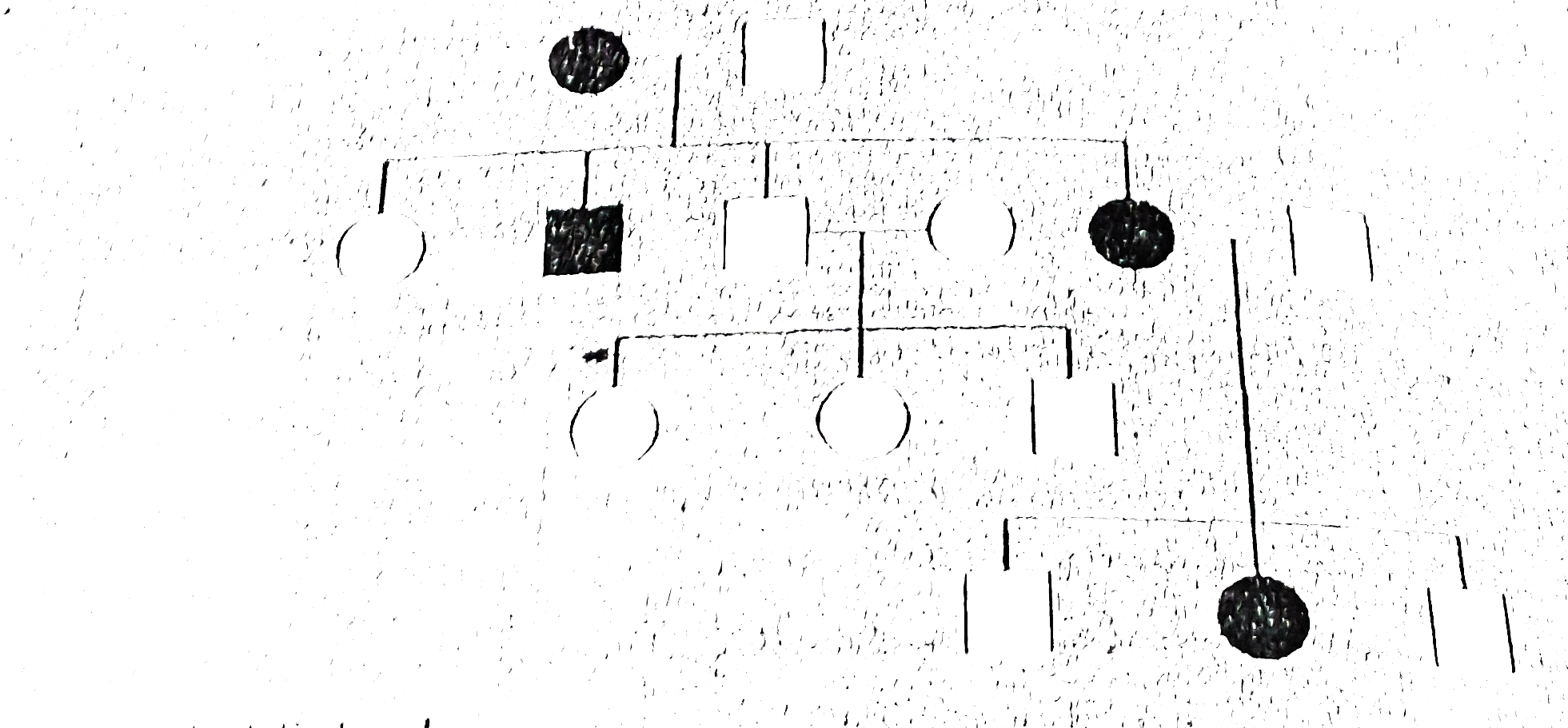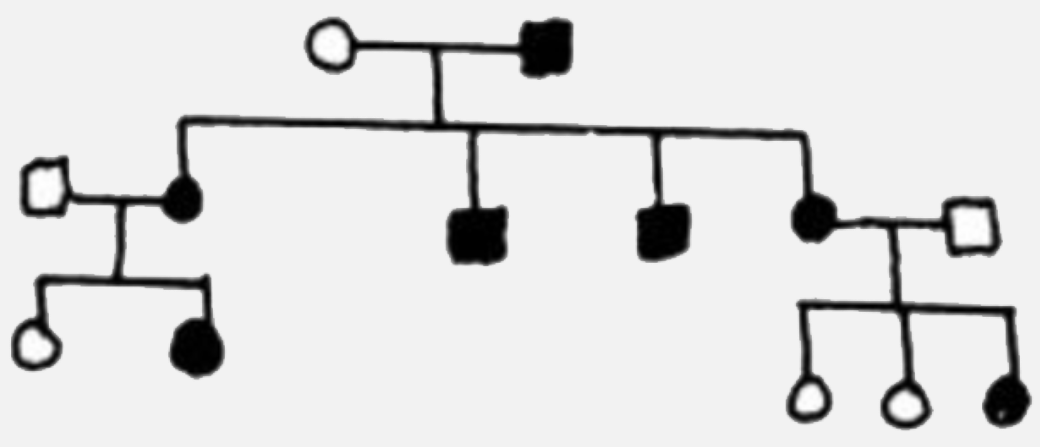Whether the haemophilic gene is dominant or recessive ?Solution in Odia
The correct Answer is:Recessive
Step by step video, text & image solution for Whether the haemophilic gene is dominant or recessive ? by Biology experts to help you in doubts & scoring excellent marks in Class 12 exams.
Updated on:21/07/2023Topper's Solved these Questions
Similar Questions
Ascaris is most commanly found in :
View SolutionSertoli cells are found in_____ of mammals .
View SolutionWhether an allele is dominant or recessive depends on:
View SolutionIn………. Both dominant and recessive alleles lack their dominant and recessive relationships
View SolutionAssertion :- In Neurospora each gene either dominant or recessive express it's effect. Reason :- Neurospora contain many alleles of a gene.
View SolutionGive differencess between dominant and recessive genes in three points
View SolutionIn the following pedigare chart, the mutant trait is shaded black. The gene sponsible for the trait is

(1) Dominant and X- linked
(2) Dominant and autosomal or dominant and X-linked
(3) Recessive and X-linked
(4) Recessive and Y-linked.
View SolutionIn the given pedigree, indicate whether the shaded symbols indicate dominant or recessive allele.
View SolutionIn the given pedigree, indicate whether the shaded symbols indicate dominant or recessive allele.

View SolutionDifferentiate between dominance and recessive genes.
View SolutionThe gene ‘T’ for the character of tallness in pea plant is dominant and gene ‘t’ is recessive. Explain it on the basis of Mendel’s experiment.
View SolutionHow do mendel's experiments show that gene may be dominant or recessive?
View SolutionWhich of the following is best suited for codominance? a) Both genes are recessive b) Both genes are dominant c) One gene is recessive d) One gene is dominant
View SolutionIn co-dominance of the human blood group, which one is a recessive gene?
View SolutionIn the following pedigree chart, the mutant trait is shaded black. The gene responsible for the trait is

(1) Dominant and X- linked
(2) Dominant and autosomal or dominant and X-linked
(3) Recessive and X-linked
(4) Recessive and Y-linked.
View Solution